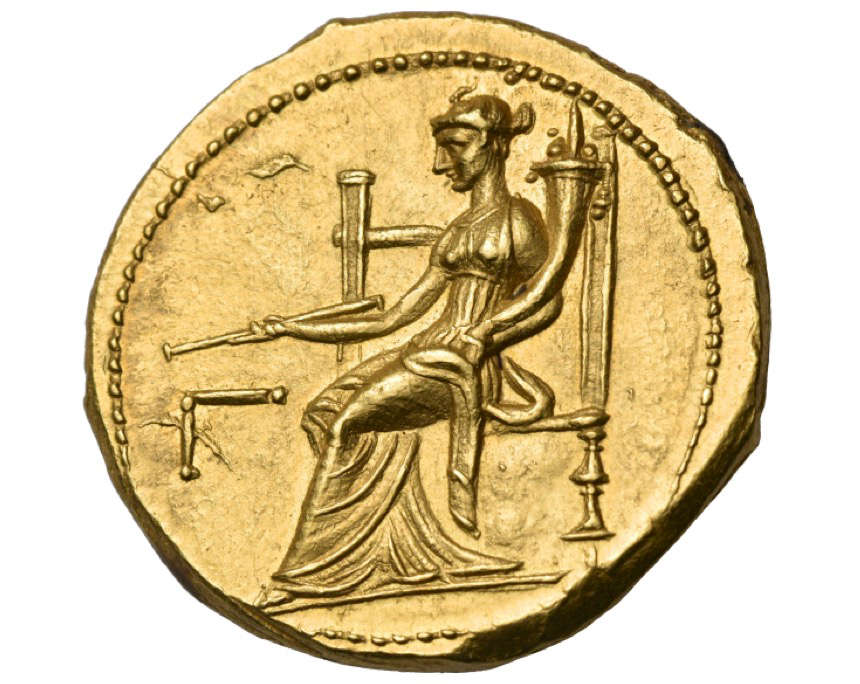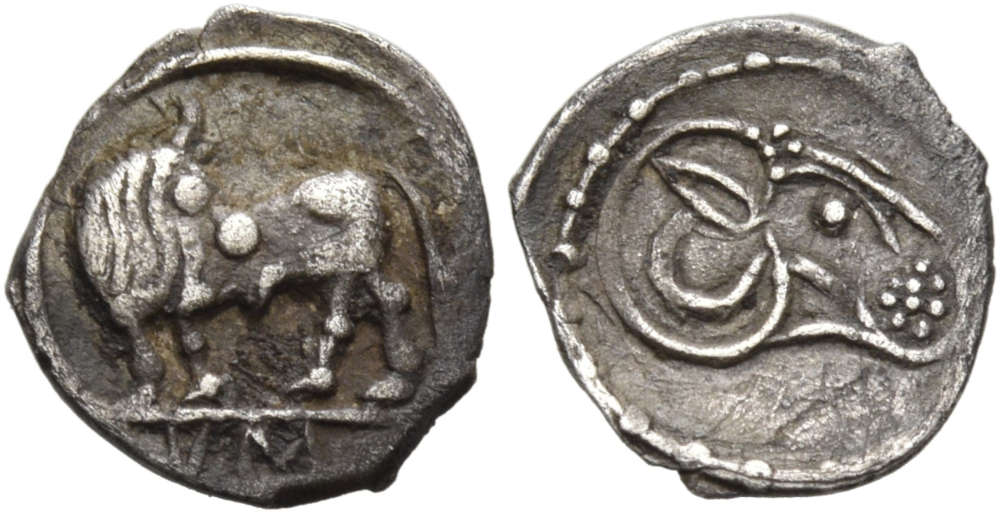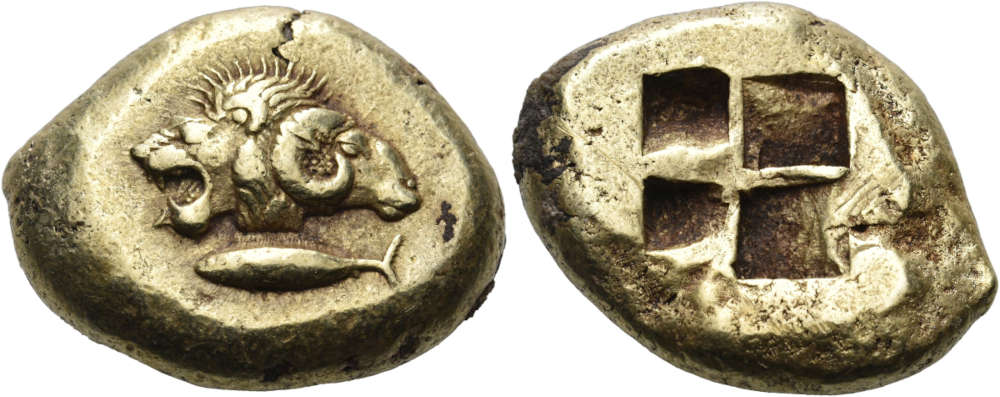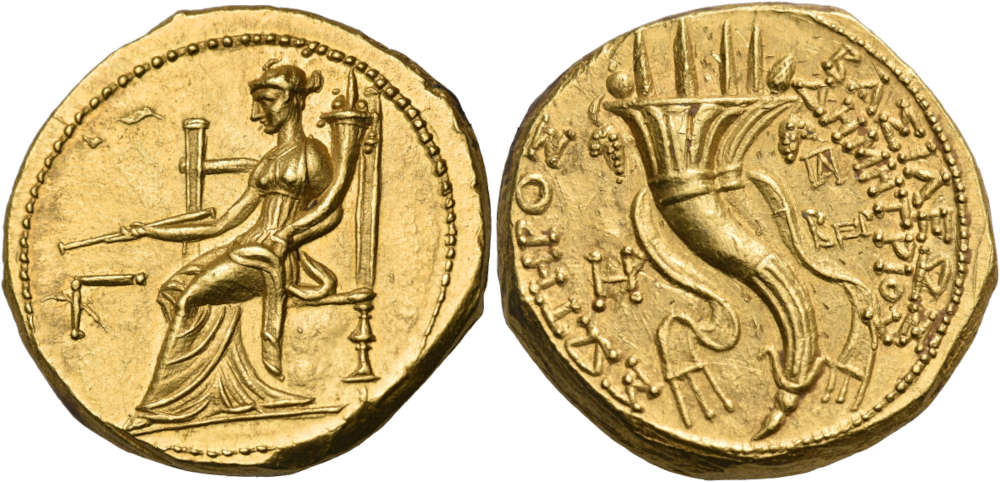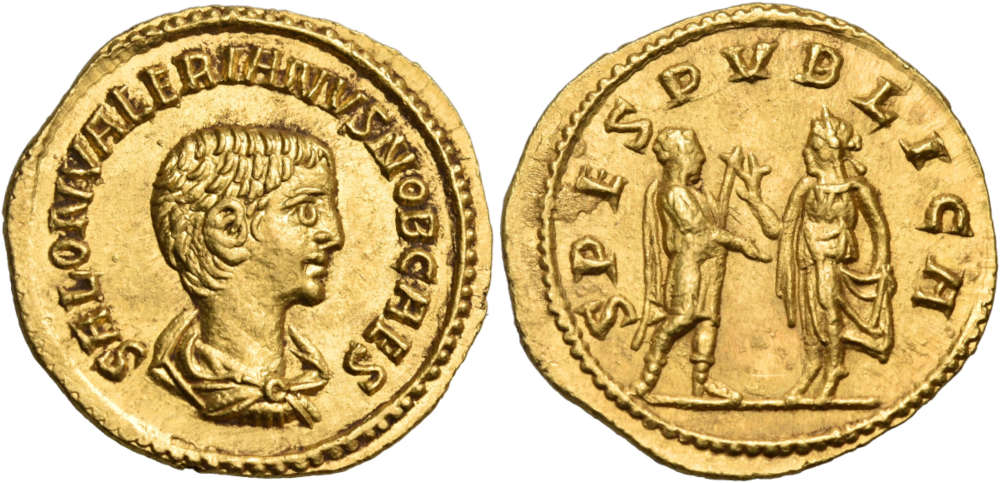The Highlights of Nomos 30
Nomos AG
Nomos 30
Coins
6 November 2023
Ch-Zurich
By Alan Walker
We already pointed out some highlights from Nomos 29, containing Part II of the Collection sans Pareille of Ancient Greek Fractions. Now it is time to turn to Auction 30, which includes a wide variety of really interesting Greek, Roman, Byzantine, Islamic, and Medieval coins. So let’s dive in!
Dr. Paul Peter Urone Collection
Lots 1001-1228 of Nomos 30 is made up from the collection of ancient Greek coins belonging to Dr. Paul Peter Urone, an emeritus professor of physics and best-selling author now actively retired and living in California. This collection is quite an eclectic one, but is bound together by the fact that every coin within it is intriguing, attractive and well worth having. The collection is primarily made up of small silver denominations (hemidrachms and below) and of the bronzes that were later issued to replace the inconveniently small silver pieces that had previously been used. In addition, there are some larger silver pieces as well and it is worthwhile noting that the bronzes are usually in unusually nice condition. Let’s look at a few:
Lot 1028: Here we have an important and unique obol from Sybaris, which must date to c. 510 BC, shortly before the fall of the city to Kroton (lot 1028, est. 3500 CHF). This coin first appeared in NAC 7 in 1995, when it was purchased by Tradart for the Belgian collector J. Falm; his coins were later sold in 2015 at NAC 82, when PPU bought it. While its uniqueness makes it highly desirable and important, the extraordinary way the reverse type is made makes it truly exciting as well. We see a ram’s head done in an outline technique that is completely different from what one would expect. It is not the full relief we see on the obverse – and which is the norm for virtually all other coins – or the curious incuse technique found almost solely in Magna Graeca in the second half of the 6th and the earlier 5th centuries BC. Here we have raised relief lines on a flat field: this is exactly like the contemporary technique used for Attic Red Figure pot painting, which was then in the process of taking over from the earlier Black Figure style. So, what we have here is a surely unique use of a painting technique to produce the die for a coin!
Lot 1073: This is quite a spectacular tetras from Akragas, isn’t it! In fact, it is surely one of the finest in existence (lot 1073, est 3000 CHF)! Acquired from CNG in 2017, this coin’s first recorded appearance was in Roma IX in early 2015 – it was previously in an English collection. What is exciting about it is the perfection of its strike, the sharpness of the virtually unworn dies used to strike it, and the lovely patina that covers it. This is basically an unimprovable coin!
Lot 1179: When this outstanding Archaic Corinthian Stater appeared in CNG MBS 69 back in June 2005 it was covered by what appeared to be an intractable deposit of rough purplish oxides. Thanks to the Herculean efforts of the aritisan-coin-cleaner, F. Kovacs, those deposits were removed and the coin was returned to its original glory! It should not be forgotten that FK was responsible for the resurrection of the Ios didrachm with the portrait of Homer that appeared as lot 152 of Nomos 24 in 2022, and on the cover of that catalogue. The present piece is a wonder: beautifully struck, well-centered and with an admirably sharp Pegasos (lot 1179, est. 25000 CHF).
Finally, the last coin from the Urone Collection discussed today is a true miniature masterpiece:
Lot 1203: This is a hemiobol from Methymna, dating to c. 350/330-250/240 BC (lot 1203, est. 450 CHF). The reverse shows us a rather heraldic-looking tortoise within a linear circle; nice enough but it is the obverse that really seizes our attention! What we have is the fully facing head of the bearded Silenos, staring at us in the sternly wise way one expects from a serious professor! This is someone with whom you do not disagree, unless you can prove yourself!
Greek Coins from various Consignors
Let us now turn to the remainder of Nomos 30, including coins from a goodly number of consignors. Lots 1229-1390 are Greek coins, and range from a gold stater of the Vindelici, a Celtic tribe living around present-day Augsburg, to a gold stater of Kyrene.
Lot 1238: No, this elegant, youthful Herakles with his exuberant sideburns does not come from Kamarina, nor does he come from Macedon or Kos. He actually is from Metapontum and he is the finest known example from a very rare issue (lot 1238, est. 50000 CHF). He is in no way a weary Herakles; rather, he is still in the flower and pride of his youth. His expression tells us that he is confident that nothing can hold him back and that his future is a golden one.
Lot 1264: Now we have another golden boy, but it is Hermes this time, not Herakles; and he is from Ainos, not Metapontum (lot 1264, est. 20000 CHF). What an extraordinary head this is! He is a perfect youth, not an athlete like Herakles whose life is spent battling powerful opponents, but the messenger of the gods, protector of travelers and heralds, merchants and thieves. The head on this tetradrachm is quite simply mesmerizing: perfect parallels to his haughty yet approachable expression can be found on the faces of Florentine aristocrats in frescoes of the mid 15th century!
Lot 1273: Another facing head, another golden boy; but this time he is Apollo on a tetradrachm from Amphipolis (lot 1273, est. 65000 CHF). Here he’s turned slightly to his left and, with his big eyes and his expansive hair, he looks very different from his colleagues Herakles and Hermes. He is neither athlete nor messenger; instead he is a god who is clearly aware of his own importance. And something has definitely caught his attention: he seems to have a rather vacant expression until you notice his eyes, which are both penetrating and angry. Something has annoyed him and that does not bode well for whoever or whatever has done the annoying!
Lot 1284: No, not a facing head this time, but a surprisingly emotional one. The head on this coin, a hemidrachm from Kierion in Thessaly of c. 400-360 BC (lot 1284, est. 7500 CHF), is that of Zeus: he is wearing his laurel wreath and his thunderbolt is behind his head; he has a well trimmed beard. His eyes are wide open, as is usual, but his open mouth, not closed at it is on all the tetradrachms of Philip II, and virtually elsewhere else, is a surprise. He seems astonished by something, or shocked; in any event, he is certainly having an emotional experience. And this is not the way we expect to see him. And this coin’s reverse is impressive too: we see, portrayed in a remarkably sculptural way, the nymph Arne kneeling to right, but turned back to left and playing with dice. What an amazing coin this is.
Lot 1320: Of course, this is something completely different – instead of a human or divine head we have two mammal heads and a fish! It is, of course, an electrum stater from Kyzikos dating to sometime during the first half of the 5th century BC (lot 1320, est. 15000 CHF). What we have is a janiform head composed of the head of a roaring lion to left combined with a ram’s head to right (and with a tunny below). Why heads of a lion and a ram? This may well be a reference to the roughly contemporary electrum coinage of Mytilene, one type of which (Bodenstedt My 11) has a ram’s head to right, in relief, on its obverse, and a lion’s head to left, incuse, on its reverse! Is this a coincidence from a common repertoire of types or is the Kyzikene issue inspired by that of Mytilene?
Lot 1359: We’re used to seeing Rhodian didrachms bearing a facing head of Helios – here’s one, struck in the early 3rd century BC, showing his profile head. It is rare and rather attractive, though it does have some faults; yet it is remarkably desirable in every way.
Lot 1377: Now this is something special! It is a gold tristater of the Seleukid king Demetrios I Soter that was minted in the royal capital Antioch, in 151/150 BC (lot 1377, est. 400000 CHF). Obviously, this is not only a great rarity – very probably unique – but it is also a coin of tremendous numismatic and historic importance. It was produced as a donative given to officials and the military in an attempt to assure their loyalty to Demetrios in the face of the threat from the usurper Alexander Balas, as well as from the kingdoms of Cappadocia, Egypt and Pergamon. This must have been hidden by its recipient immediately after it was received…but it was never recovered.
Lot 1406: This is a tetradrachm of Augustus struck in 5/4 BC in Antioch-on-the-Orontes, some 145 years after the gold tristater of Demetrios I that appears in lot 1377 (lot 1406, est. 2500 CHF). It is in wonderful condition, has an obverse die engraved by superbly skilled artist, fully conversant with Roman stylistic conventions, and has a very well-made reverse, showing the Tyche of Antioch (not the Seleukid Tyche that appeared on the obverse of lot 1377) and a wonderful frontal torso of the young river god Orontes, who seems to be saluting her with his raised left hand. Sharply struck from fresh dies, this coin is nearly perfect!
Lot 1421: The portraits of the emperor on the coinage of Hadrian are spectacularly good, and this one, a piece struck in Rome between 121 and 123 is no exception (lot 1421, est. 400 CHF). Of course, the fact that the coin is in good extremely fine condition, is perfectly struck and perfectly centered, and is attractively toned, makes it even more desirable! This coin comes from the collection of the American collector, Ried Redlich, who only acquired pieces that were superb in every way – there are quite a number of pieces from his collection in this sale. He was so proud of his coins that he insisted we provide as complete a provenance as possible for each of them: not only from whom he bought the coin, but where he did so as well (a few were acquired from some very curious people!).
Lot 1480: While the die engraver who produced the dies for this extremely rare aureus of Saloninus Caesar (lot 1480, est. 75000) was, in some ways, less skillful that the ones who cut the dies for the tetradrachm of Augustus and the denarius of Hadrian described above, he was certainly working in far more uncertain times. He produced them in Commagene in 258-259 at a time when the Empire faced barbarian attacks in the West, revolts, and Sassanian Persian attacks in the East. At the time this coin was struck Saloninus was actually in Gaul, under the guardianship of Gallienus’s praetorian prefect Silvanus, while Gallienus was dealing with flare-ups in the Balkans and Valerian was in the East. A year or so later Saloninus was murdered by the usurper Postumus.
Lot 1521: Now for a big jump! This is a follis of 40 nummi struck in Constantinople toward the end of the joint reign of the rapacious Irene and her foolishly vicious son Constantine VI (lot 1521, est. 500 CHF). Minted between the years 792 and 797 it shows a full and powerful bust of Irene on the obverse – the place of honor, and a much smaller bust of Constantine VI, resting on a horizontal bar, on the reverse. Below the horizontal is the denomination, M, between and X and a N (stylized remains of a date). These coins must have rapidly gone out of circulation because many of them a well-preserved today (unlike most Byzantine bronzes, the vast, vast majority of which are very badly preserved): but this piece is truly exceptionally fine!
Obviously, there are many, many more lots in this auction that are worth writing about, but this is enough for today! Do take a look on our online catalogues and see for yourself! Till next time…




